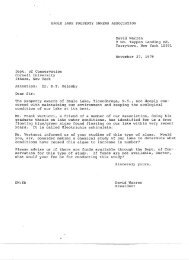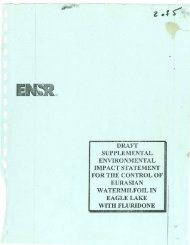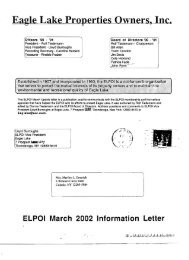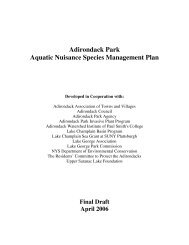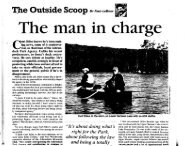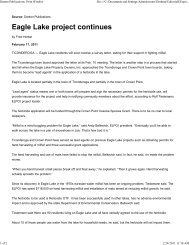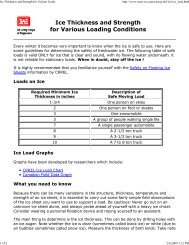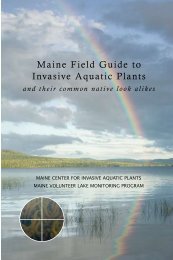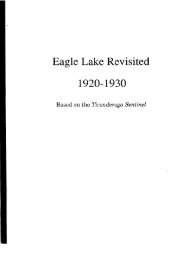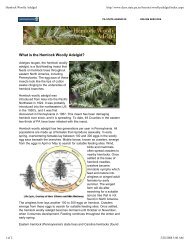Lake Hortonia 2008 - Eagle Lake Property Owner's Inc.
Lake Hortonia 2008 - Eagle Lake Property Owner's Inc.
Lake Hortonia 2008 - Eagle Lake Property Owner's Inc.
Create successful ePaper yourself
Turn your PDF publications into a flip-book with our unique Google optimized e-Paper software.
1999 and 2007 to 11 species in 2000, 10 species in 2001, 21 species in 2003 and 2004, 13<br />
species in 2005 and 16 species in 2006. Species present have been variable from year to year,<br />
with a total of 36 species recorded between the 9 surveys. Differences have generally been in<br />
the less common species, less than 2% frequency of occurrence, or in species represented in only<br />
a single survey year (14 species). Four species were reported in 2004 wetland surveys for the<br />
first time, Najas flexilis, Polygonum sp., Pontederia cordata and Potamogeton zosteriformis. All<br />
four species were previously reported for <strong>Lake</strong> <strong>Hortonia</strong>. No previously unreported species were<br />
observed since 2004. Eurasian watermilfoil abundance in the wetland transect increased<br />
substantially in 2003, more than double the greatest frequency previously reported in 2000. This<br />
dramatic increase in the abundance of Myriophyllum spicatum was accompanied by a decline in<br />
native species richness (Figure 12), while total species richness remained virtually unchanged<br />
from 2001. In the 2004 post-treatment survey, Myriophyllum spicatum frequency of occurrence<br />
declined from 2003 while native and total species richness increased. The wetland area was<br />
treated with Renovate in 2006, and Myriophyllum spicatum was absent. Total and native species<br />
richness was also lower than previously recorded in 2006. Myriophyllum spicatum remained<br />
absent in 2007 and native species richness returned to pre-treatment levels. In <strong>2008</strong>, regrowth of<br />
Eurasian watermilfoil was observed however native species richness approached the maximum<br />
value reported in 2000 of 3.00 ± 0.22 species per survey point.<br />
24



